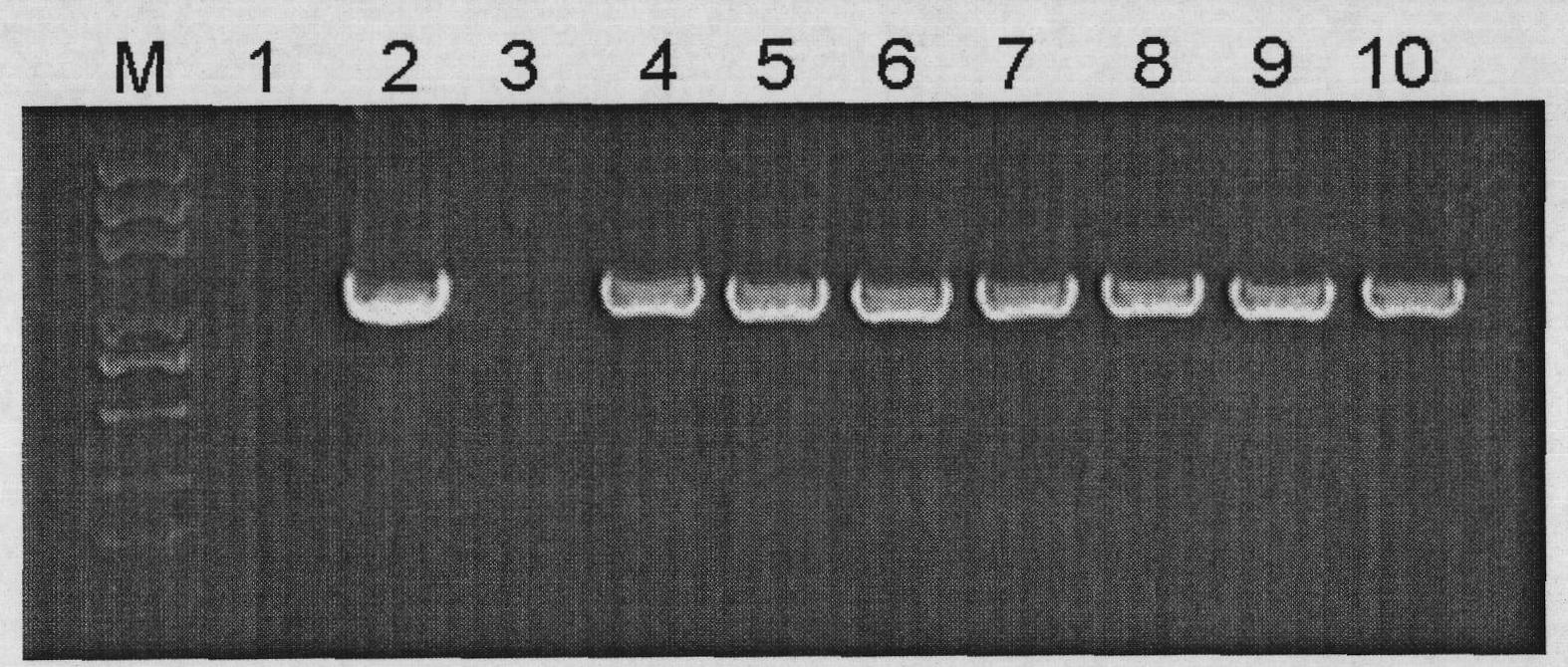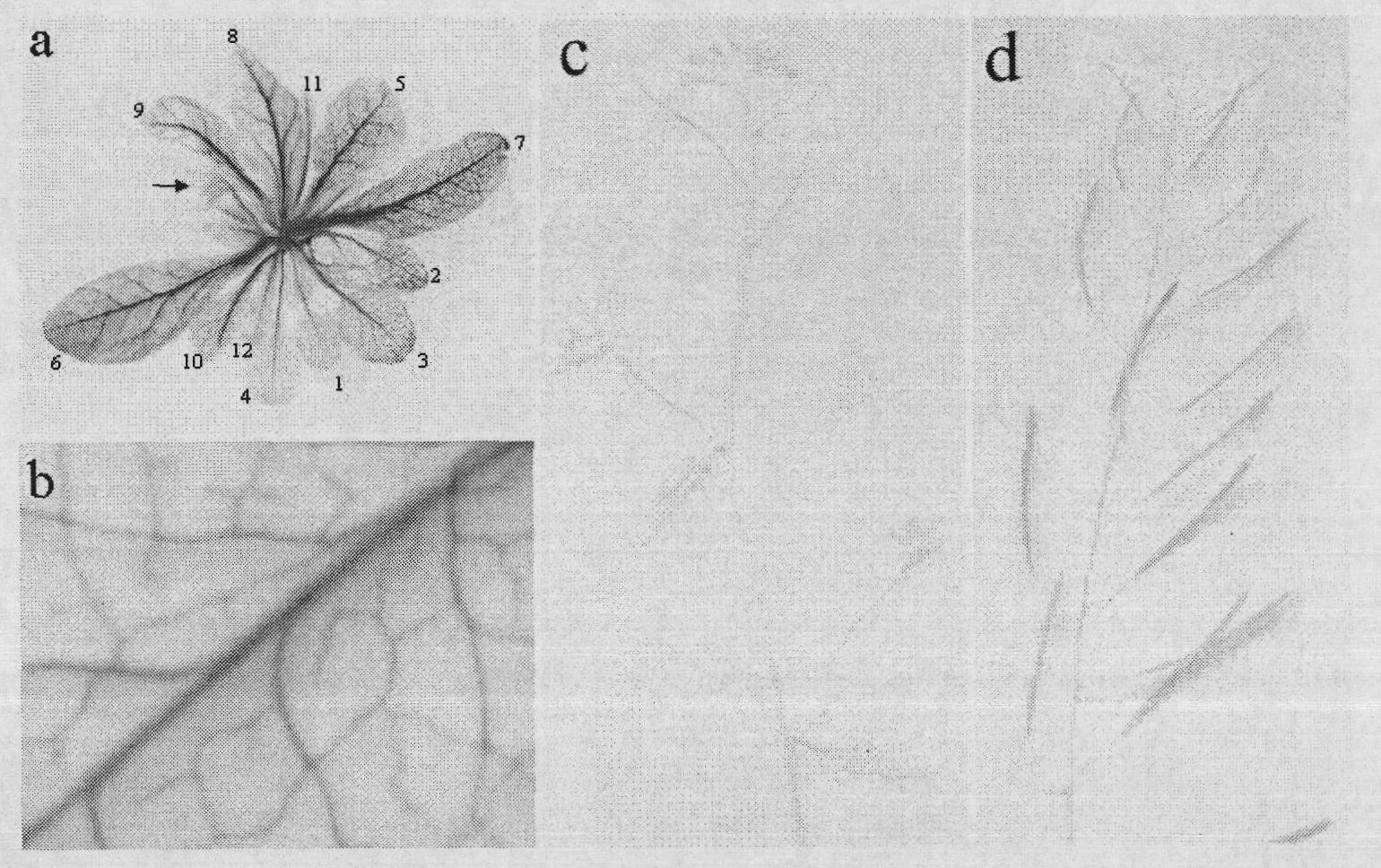Vegetable leaf vein specific promoter and use thereof
A promoter and specific technology, applied in the field of plant genetic engineering, can solve problems such as silencing or co-suppression, and achieve the effect of wide application value
- Summary
- Abstract
- Description
- Claims
- Application Information
AI Technical Summary
Problems solved by technology
Method used
Image
Examples
Embodiment 1
[0034] Example 1: Vein-specific VS promoter cloning
[0035] First, the 1107bp VS promoter was amplified by PCR method using Arabidopsis genomic DNA as a template, and the amplified product was recovered and TA cloned.
[0036] (1) PCR amplification of the target fragment
[0037] Specific primers were designed according to the known sequence of the Arabidopsis VS promoter region, a BamHI restriction site was introduced into the upstream primer, and an Nco I restriction site was introduced into the downstream primer.
[0038] Upstream primer: 5'-AC GGATCC GAACTAGGTCTAGTCACGTGGT-3' (BamHI cutting point introduced)
[0039] Downstream primer: 5'-AC CCATGG GCTGTGTCAATTCTCACTTCTT-3' (introduce Nco I cutting point)
[0040] Genomic DNA of Arabidopsis thaliana was extracted according to a conventional method, and the genomic DNA was used as a template to perform PCR amplification using the above primers to prepare a VS promoter fragment.
[0041] PCR reaction system:
[0042]...
Embodiment 2
[0058] Example 2: Utilize pCAMBIA1301 vector (containing GUS reporter gene) to construct "VS promoter-GUS" fusion gene
[0059] (1) Extract vector pCAMBIA 1301 plasmid from Escherichia coli (the strain can be purchased from biological company or CAMBIA), and recover the large vector fragment (which contains the GUS reporter gene sequence) after double digestion with BamH I / Nco I.
[0060] (2) A plasmid was extracted from the TA clone prepared in Example 1, double digested with BamH I / Nco I, and the VS promoter fragment (same as in Example 1) was recovered by agarose gel electrophoresis.
[0061] (3) The above two fragments were ligated overnight at 16° C. under the catalysis of ligase to complete the construction of the “VS promoter-GUS” fusion gene on the pCAMBIA 1301 vector.
[0062] Connection system:
[0063]
[0064] (4) Transform Escherichia coli DH5α competent cells with the ligation mixture, the method is the same as in Example 1.
[0065] (5) Select the white col...
Embodiment 3
[0071] Embodiment 3: Preparation of transgenic Arabidopsis
[0072] (1) Transform Arabidopsis thaliana with the "VS promoter-GUS" fusion gene constructed in Example 2. The specific transformation method adopts the Floral infiltration (Tague, 2001) method mediated by Agrobacterium, and the obtained seeds are subjected to 50mg / L hygromycetes Plants with normal growth were screened for plant resistance and transferred to soil for culture.
[0073] (2) PCR detection of transgenic plants: cut the leaves of transgenic plants and wild-type plants respectively, and extract genomic DNA from leaves with reference to the method of "Molecular Cloning Experiment Guide (Third Edition)" (Huang Peitang et al., 2002), and carry out PCR with the following primers Reaction, reaction system is as embodiment 1:
[0074] Upstream primer: 5'-ACGGATCCGAACTAGGTCTAGTCACGTGGT-3'
[0075] Downstream primer: 5'-TCGCGATCCAGACTGAATGCC-3'
[0076] The PCR product was subjected to agarose gel electrophores...
PUM
 Login to View More
Login to View More Abstract
Description
Claims
Application Information
 Login to View More
Login to View More - R&D Engineer
- R&D Manager
- IP Professional
- Industry Leading Data Capabilities
- Powerful AI technology
- Patent DNA Extraction
Browse by: Latest US Patents, China's latest patents, Technical Efficacy Thesaurus, Application Domain, Technology Topic, Popular Technical Reports.
© 2024 PatSnap. All rights reserved.Legal|Privacy policy|Modern Slavery Act Transparency Statement|Sitemap|About US| Contact US: help@patsnap.com










